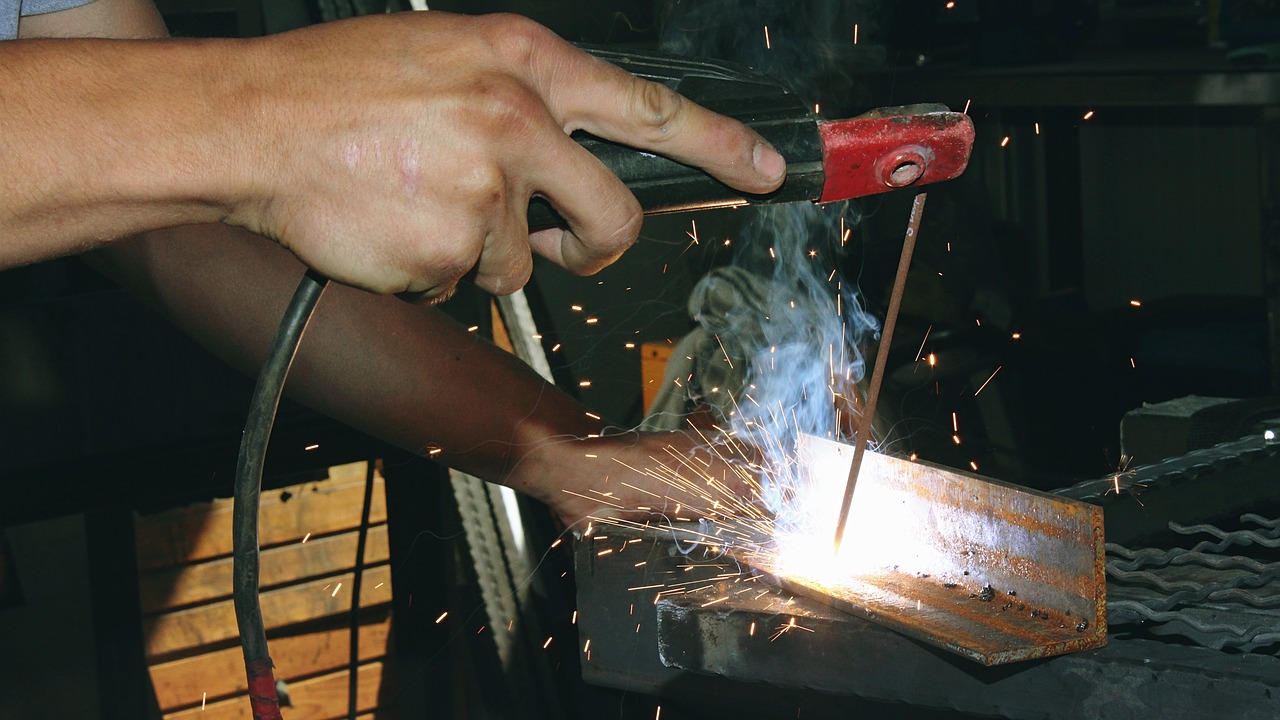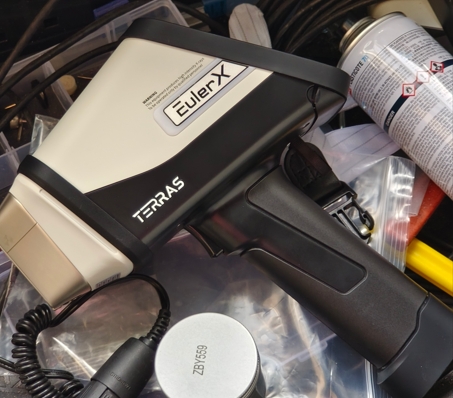
Positive Material Identification
A high-tech enterprise focusing on the development and application of X-ray technology products, committed to becoming a leading supplier of X-ray industrial testing solutions.
The Future of Metal XRF Analyzers: Trends and Innovations to Watch
In the world of materials analysis, metal X-ray fluorescence (XRF) analyzers have become indispensable tools across industries ranging from manufacturing to environmental science. These analyzers provide quick, non-destructive chemical composition analysis, making them invaluable for quality control, compliance testing, and material characterization. As technology continues to advance, the future of metal XRF analyzers promises exciting developments, with trends and innovations that will reshape their capabilities and applications.

Terras EulerX900 Handheld Alloy Analyzer
1. Miniaturization and Portability
One of the most exciting developments in metal XRF analyzers is the trend toward miniaturization and portability. Traditionally, XRF analyzers were bulky, lab-based instruments requiring a stable, controlled environment for optimal operation. However, advancements in detector technology, power sources, and software have led to the development of handheld and portable XRF devices that deliver high-quality results in the field.
For industries such as construction, scrap metal recycling, and mining, portable XRF analyzers are a game-changer, allowing on-the-go testing and analysis without the need for sending samples to a lab. This trend is expected to continue, with more compact, powerful analyzers emerging, further enhancing efficiency and convenience for users.
2. Increased Sensitivity and Accuracy
Another key innovation driving the future of metal XRF analyzers is increased sensitivity and accuracy. Recent breakthroughs in detector technology and signal processing algorithms are allowing for the detection of trace elements and minute variations in the composition of metals.
For industries such as aerospace, automotive, and electronics, where precision is paramount, XRF analyzers are becoming increasingly adept at detecting contaminants and material inconsistencies at much lower levels than before. This heightened sensitivity can be particularly beneficial in ensuring compliance with regulatory standards and preventing costly manufacturing defects.
3. Integration with Artificial Intelligence (AI)
Artificial intelligence and machine learning are poised to revolutionize the way metal XRF analyzers operate. By integrating AI into these systems, manufacturers can automate data analysis, leading to faster, more accurate results. AI can help in pattern recognition, anomaly detection, and predictive maintenance, making XRF analyzers smarter and more efficient.
AI-powered XRF analyzers could also enable users to make real-time adjustments to testing parameters, ensuring optimal results for various materials and conditions. This shift towards intelligent systems is expected to drive the development of next-generation analyzers with automated decision-making capabilities and enhanced usability.
4. Data Connectivity and Cloud Integration
As industries increasingly rely on digital platforms, the future of metal XRF analyzers will be shaped by enhanced data connectivity and cloud integration. With built-in Wi-Fi and Bluetooth capabilities, modern XRF analyzers can now seamlessly transmit test results to centralized databases, enabling real-time monitoring and analysis.
Cloud-based platforms offer the benefit of storing large datasets, facilitating remote access, and providing advanced analytics tools for data interpretation. This integration will streamline the workflow for businesses, allowing for better collaboration across departments, quicker decision-making, and more accurate reporting.
5. Advanced Multi-Element Detection
Traditional XRF analyzers were often limited in the number of elements they could detect at once. However, new advancements are enabling the simultaneous analysis of multiple elements with greater accuracy. By incorporating advanced multiplexing techniques, future metal XRF analyzers will be capable of analyzing complex alloys and multi-material samples in a single scan.
This capability will be particularly important in industries dealing with complex materials such as automotive alloys, high-tech manufacturing, and recycling. Analysts will be able to perform comprehensive, multi-element analysis in less time, enhancing productivity while maintaining high levels of precision.
6. Enhanced User Experience through Intuitive Interfaces
Future metal XRF analyzers are also expected to feature more intuitive and user-friendly interfaces. The move towards simpler, more accessible controls will make these advanced tools more approachable for workers with varying levels of expertise. Touchscreen displays, customizable dashboards, and interactive software will empower users to easily navigate complex data and perform tests with minimal training.
Furthermore, augmented reality (AR) integration could play a role in enhancing user experience by providing real-time guidance and visualizations of the testing process. These user-focused innovations will make metal XRF analyzers more accessible and reduce the learning curve for operators.
7. Environmental Sustainability and Regulatory Compliance
As industries face increasing pressure to meet stringent environmental regulations, metal XRF analyzers will play a key role in ensuring compliance. Future models are expected to improve upon their ability to detect hazardous substances in metals and alloys, helping businesses avoid environmental contamination.

Terras EulerX900 Handheld Alloy Analyzer
The EulerX 900 series has proved to be an excellent choice for metal analysis in a wide fields, providing fast, accurate results directly to the user. Thanks to its cutting-edge electronics and sophisticated mathematical algorithms, the EulerX 900 series ensures superior measurement quality within seconds. This makes it an ideal tool for inspecting and analyzing incoming materials, finished products, and in-process production parts in a non-destructive manner. Its simplicity of operation allows users to quickly view alloy grade and chemical composition on the touch screen display, achieving laboratory-quality analysis with minimal training and virtually no need for sample preparation, regardless of the sample is shape or size.
Conclusion
The future of metal XRF analyzers is incredibly promising, with numerous advancements on the horizon that will enhance their capabilities, portability, and overall performance. From increased sensitivity and accuracy to the integration of AI and cloud connectivity, the next generation of XRF analyzers will provide users with faster, more reliable results, contributing to improved manufacturing processes and higher product quality. As industries continue to evolve, metal XRF analyzers will remain at the forefront of materials testing, helping businesses stay competitive in an increasingly data-driven and environmentally conscious world.
Join Us
Subscribe to our email list for updates & promotions.



